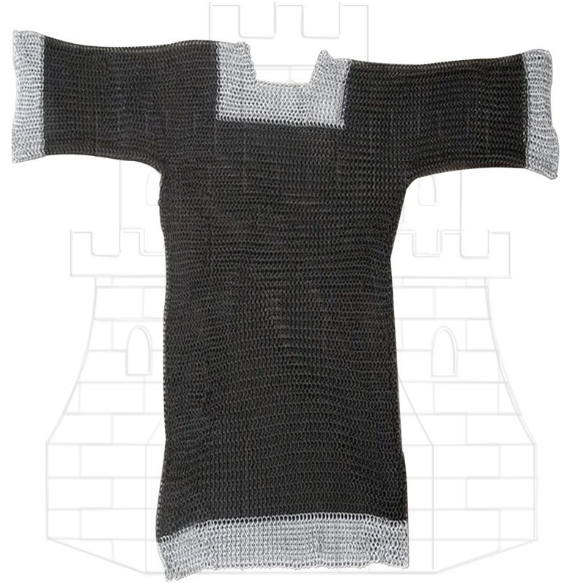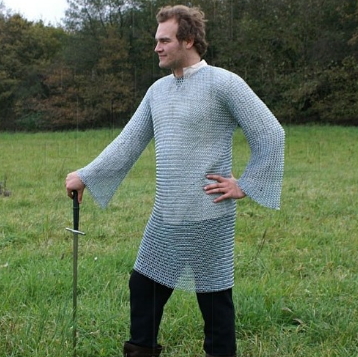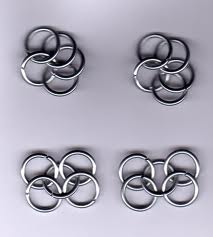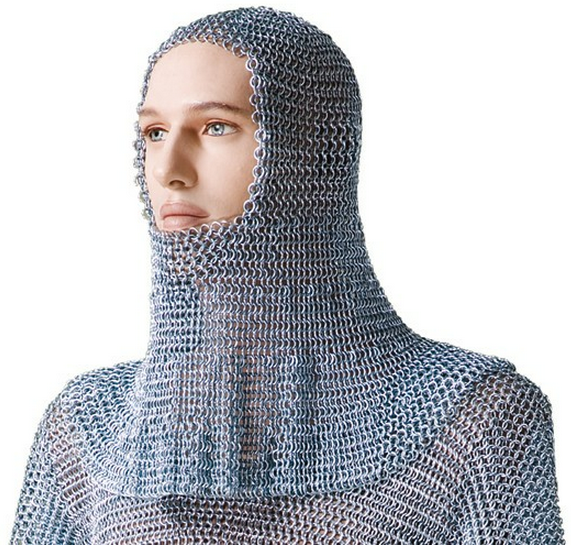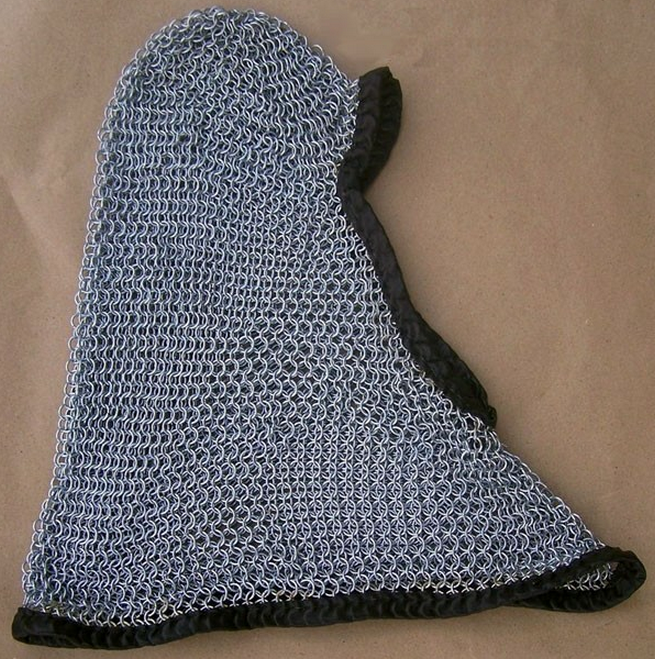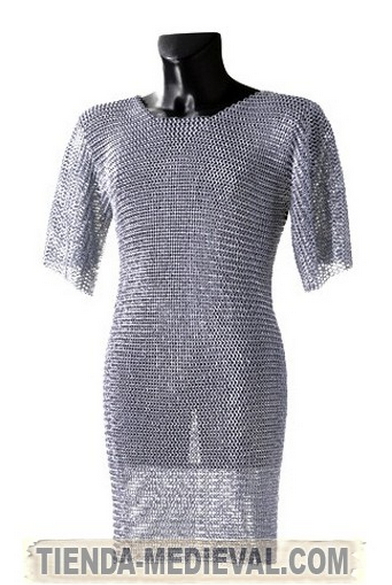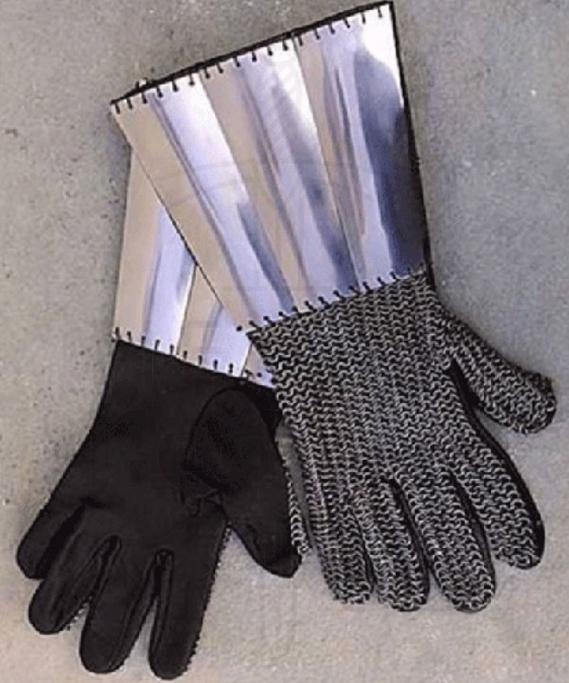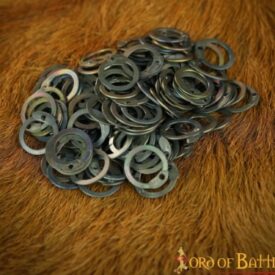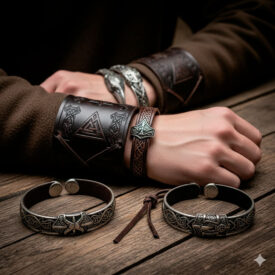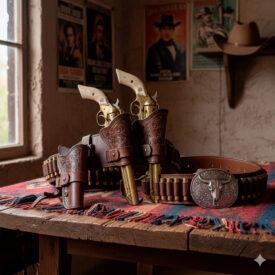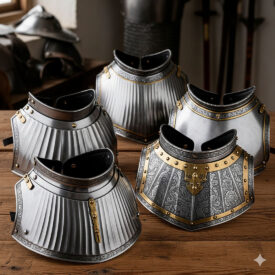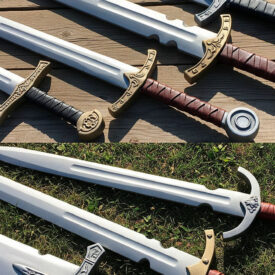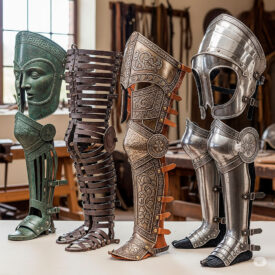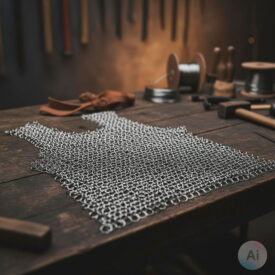The chainmails, often simply known as mail armor, have captivated humanity for millennia. Much more than just historical objects, these complex structures of interlinked metal rings were a flexible and lightweight protective solution that revolutionized medieval warfare. Today, they remain essential pieces for historical reenactment enthusiasts and live action role-players (LARP).
But what exactly is a chainmail and how has it remained relevant over time? In this article, we will explore its fascinating history, the secrets of its construction, the different types that exist—including the vital mail coif or chainmail coif—and, crucial for its durability, how to care for and maintain them properly. Get ready to delve into the world of these metallic masterpieces!
A Glimpse into the Past: History and Evolution of Chainmail
The history of mail armor spans thousands of years, with the earliest finds dating back to the 5th century BC. Its invention is attributed to the Celts, and since then, these armors formed the backbone of defense for warriors of various cultures. It could be said that the 2,500-year history of the chainmail continues into the 21st century, as it remains in limited use as a component of bulletproof vests and other applications.
Over the centuries, chainmail spread widely, being adopted by Roman legions (known as the Lorica Hamata) and by knights in Medieval Europe. The Roman armies introduced the lorica segmentata and it continued in use among auxiliaries and legionaries throughout the imperial period. The basic design of chainmail remains the same, although certain features began to change on its journey eastward.
The chainmail provided effective protection against cuts and sword blows, without significantly restricting the user’s mobility. This was especially valuable in hand-to-hand combat and for riders. Its possession was a clear symbol of status and wealth, given the expensive and specialized manufacturing. However, with technological advances, it was gradually replaced by plate armors, which provided better protection against piercing weapons and, later, firearms.

The Magic of Rings: Manufacture and Features
Crafting a chainmail was a laborious process that required exceptional craftsmanship. Thousands of individual rings had to be forged and joined to create the protective fabric. The vast majority of chainmails are built following the “4-in-1” pattern, meaning each ring is linked to four other rings.
Materials and Finishes: Functional vs. Decorative
Chainmails were traditionally made of iron or steel, robust materials but susceptible to rust. Today there are 2 types of chainmails: functional chainmails (made of steel or iron) and decorative chainmails (made of aluminum). Functional chainmails are quite heavy, weighing up to about 24 kg, while decorative chainmails are made of aluminum and weigh much less than functional ones, making them ideal for LARP.
Finishes can vary: galvanized steel or anodized aluminum (which is shiny) is more resistant to corrosion than natural finish, which is more prone to rust. Blackened (blued) steel offers a different and subtle aesthetic.
The Type of Link is the Key to Strength
Chainmails provide very effective defense against blows. In general, the resistance of chainmail to weapons is determined by four factors: the type of link (riveted, butted or welded), the material used (iron, bronze or steel), the density of the weave and the thickness of the ring. Rings can have two basic shapes: round or flat, the latter being more solid with a larger visible surface.
As for their links, rings can be:
- Butted ring: The ends only touch, they are less resistant and easier to produce.
- Riveted ring: The ends are flattened, pierced and joined with a small nail or rivet. This makes them much more resistant to penetration and breakage.
- Welded rings: The ends are heated and forged together, providing a very strong link.
- Punched rings: Stamped from a flat sheet, they come already closed but are less stable.
The Coif or Mail Hood: Vital Protection for the Head
Within the mail armor set, the mail coif, also known as a mail hood or coif, is an essential historical piece that protects the head, neck, and nape of the wearer. Made of the same ring mesh, this hood provided vital protection without the rigidity of a full helmet, allowing greater mobility. It could be easily worn under other helmets, filling the gaps between the helmet and the breastplate, and proved to be a versatile element of armor.
It was used as an addition to chainmail to cover and protect the head. Its importance was such that it became a symbol of chivalry and advanced medieval metallurgy techniques. Coifs also had regional differences, adapting to climates, combat styles and local blacksmithing traditions.
Care and Maintenance: The Secret of Its Durability
Proper care of mail armor is crucial for its longevity and functionality. Without appropriate maintenance, the risk of rust, loss of flexibility or even disintegration is high, both in historical pieces and modern replicas.
Cleaning Chainmail Armor
Dry cleaning: Shake and brush the armor with a soft brush to remove light dirt and loose dust. This can be done after each use for LARP.
Wet cleaning: For deeper cleaning, use a mild soap solution. Soak the armor and work carefully with a soft brush, making sure to reach all areas. After, rinse thoroughly with clean water to remove any soap residue. Complete drying is essential to prevent rust. You can let it air dry in a well-ventilated spot, use an absorbent cloth, a hair dryer on low power for tricky areas, or even the old method of placing it in a bag with dry rice to absorb moisture.
Rust Removal and Protection
Inspect your armor regularly for reddish-brown spots or rough areas. For minor rust cases, use a soft wire brush or fine sandpaper. Once you have removed the rust, apply a high-quality rust-preventive product to the entire armor. Make sure the coating is thin and even so as not to affect the rings’ mobility, and repeat the treatment regularly, especially before long-term storage.
Oiling and Greasing: Flexibility and Protection
Regular oiling is crucial to prevent rust and maintain the fabric’s flexibility. The choice of lubricant depends on the material:
- Steel: Acid-free oils, such as gun oils.
- Brass: Light mineral oils or products specifically for brass.
- Aluminum: Silicone sprays or light non-corrosive oils.
Apply the oil with a soft cloth or brush, working carefully over all the rings. Remove any excess to avoid dirt buildup. Excessive oiling can be counterproductive, attracting dust and dirt.
How to Put On and Take Off a Chainmail Shirt
Putting on and taking off a chainmail shirt can be tricky due to its weight, size, and friction. The pressure falls mainly on the shoulders, so the weight can be better distributed using a belt over the mail, which offers another support point.
For maximum protection and comfort, a padded garment was worn underneath the chainmail. To put it on, you can insert your arms through the sleeves and then slip your head through the neck opening, using gravity to your advantage. To take it off, lift the lower part so it doesn’t get caught at your hips and shake your arms and shoulders until the chainmail slides down your back, shoulders, and head.
The chainmail usually had no sleeves or very short ones, 12 or 13 cm at most, and reached up to mid-thigh. On their hands, warriors also wore chainmail gloves to cover and protect them from cuts from sharp medieval weapons like swords, sabers, daggers or knives.
To avoid ring rubbing and increase the mail’s effectiveness, it is recommended to wear a gambeson or padding underneath. This is because, even though mail is very effective against cuts, it is quite poor at protecting against blunt impacts, unlike plate armor that distributes the force of blows over the entire plate.

